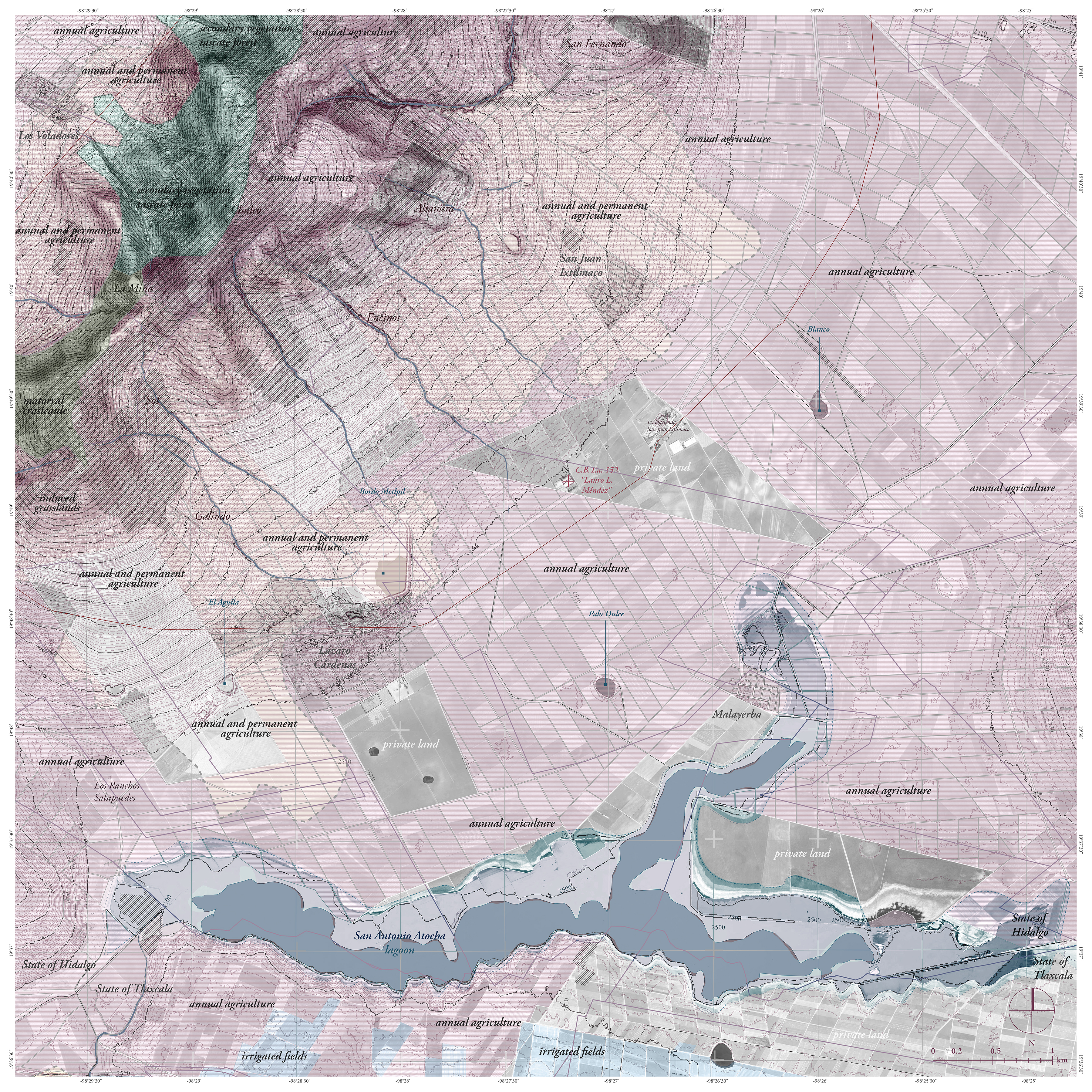EMBRACING WATER
Engaging Cooperatives Towards Productive Landscapes
Fall 2021
Harvard University Graduate School of Design
Advised by Lorena Bello Gomez
Collaboration with Lauren Duda, Ying Dong
Harvard University Graduate School of Design
Advised by Lorena Bello Gomez
Collaboration with Lauren Duda, Ying Dong
Situated in the former liquid territory of the Tochac lagoon and the settlement of Lázaro Cárdenas, our project aims to intertwine people, culture, and the earth's natural cycles in enriching the livelihoods of the region. Within an area that is subject to a continuous drought: one that is defined to be climatic and ecological, but also economic and cultural our main values are to:
1. Preserve the cultural patrimony of the area by embracing traditional farming techniques of polycultures.
2. Engage with the natural cycles
3. Support the local economy by actively engaging the community and tourists
1. Preserve the cultural patrimony of the area by embracing traditional farming techniques of polycultures.
2. Engage with the natural cycles
3. Support the local economy by actively engaging the community and tourists







Proposed masterplan for Lazaro Cardenas.

Transect of the proposal from the upland mountainous areas to the lagoon (bottom) and systems and cycles that are embedded in the design proposal, including the water cycles, the restoration of biodiversity through reforestation, and the recovery of traditional farming practices (top).

Plan of implementatio, which is color-coded here in three phases (bottom) and diagrams of the evolution of the landscape along the transect (top).

“Calendario de la Tierra y la Cultura” (Calendar of the Earth and of Culture), illustrating the yearly events that would take place at Lazaro Cardenas, connecting the agricultural patterns, to the climatic and water cycles, and to the place’s cultural heritage.



